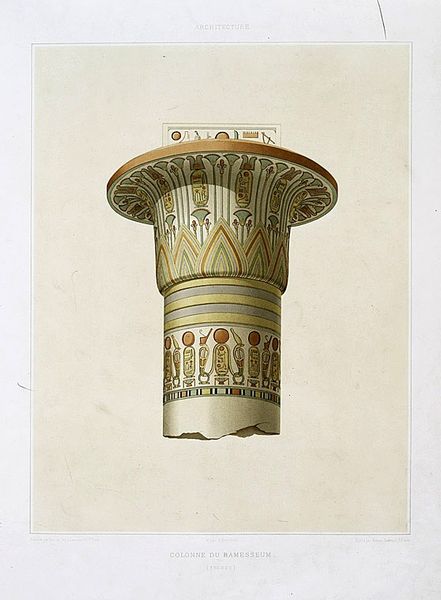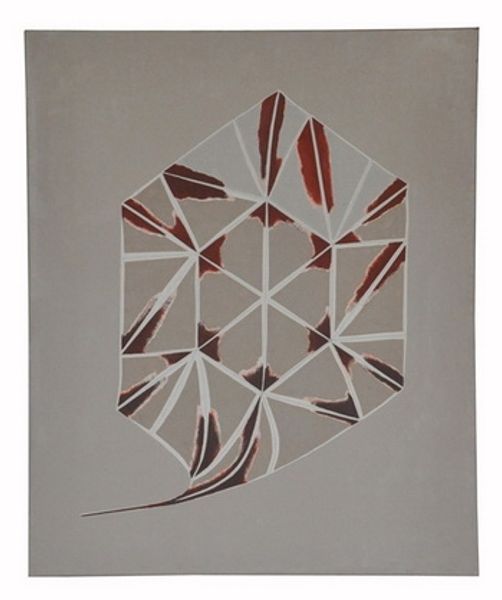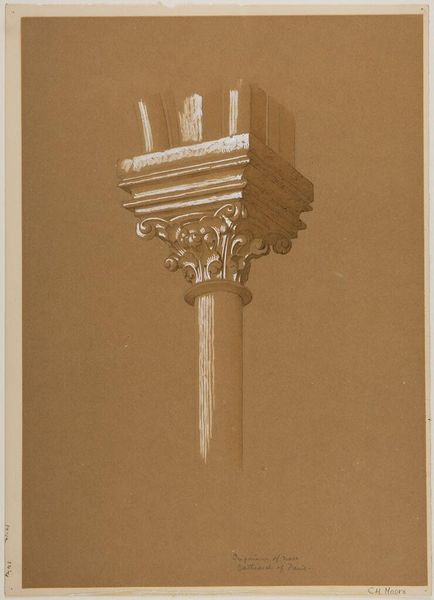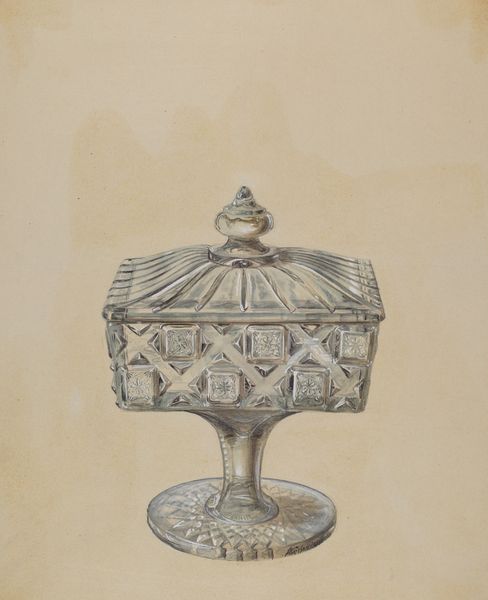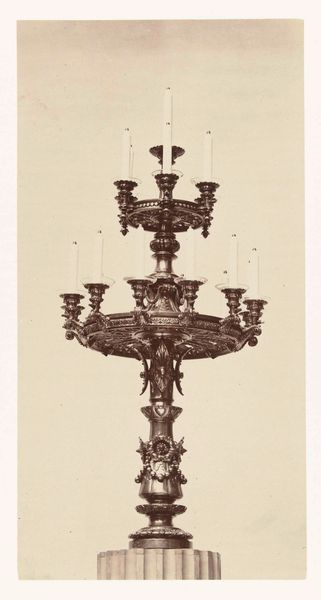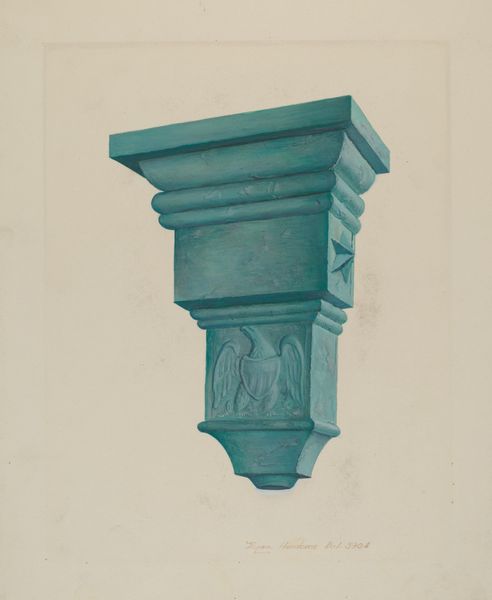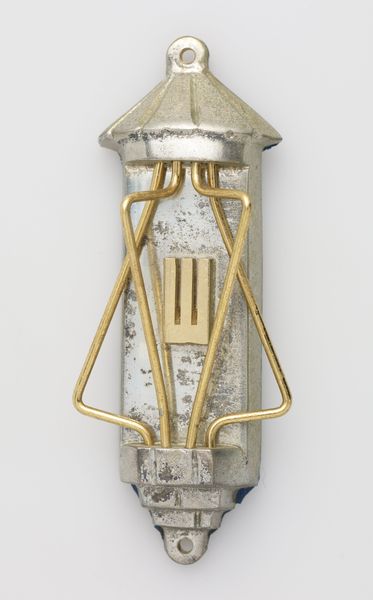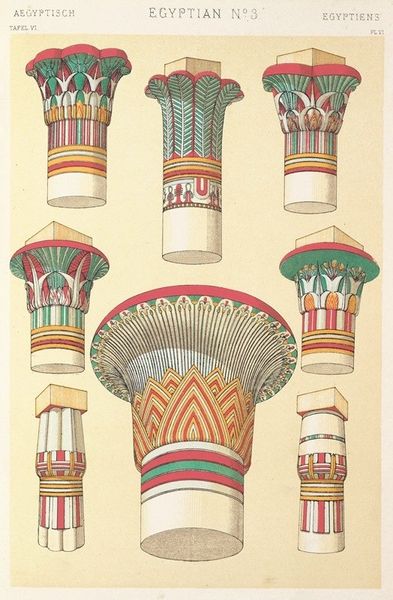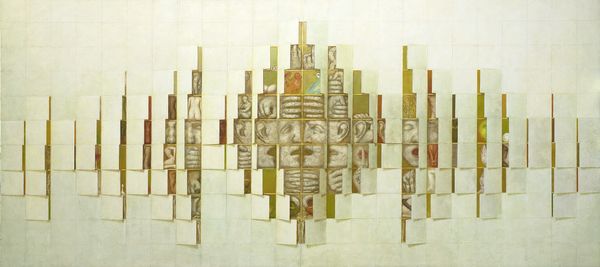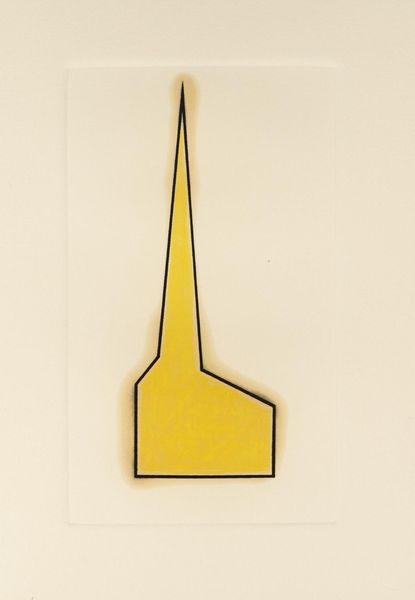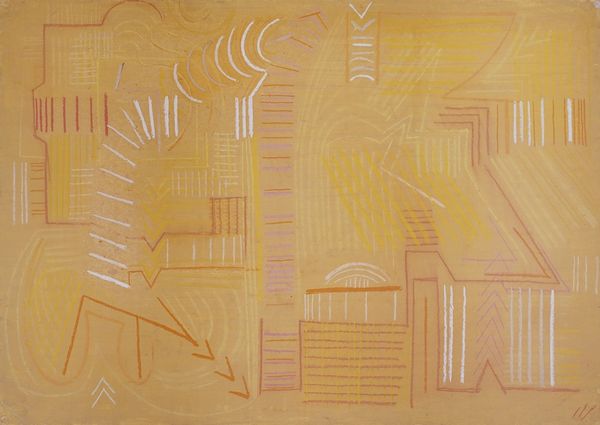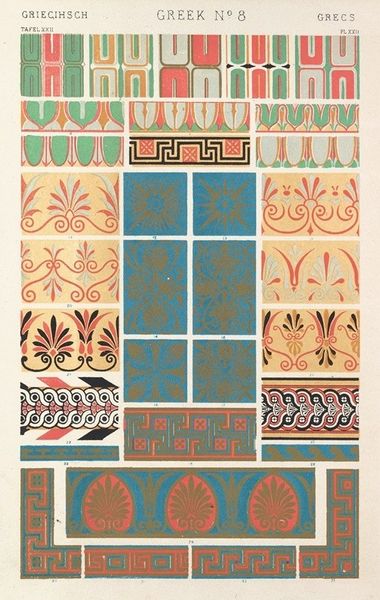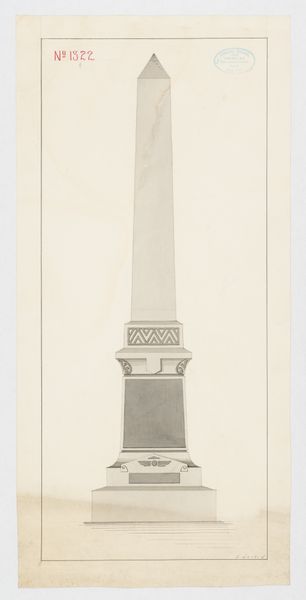
drawing, watercolor, architecture
#
drawing
#
water colours
#
ancient-egyptian-art
#
watercolor
#
geometric
#
ancient-mediterranean
#
watercolour illustration
#
watercolor
#
architecture
Dimensions: 35 x 25 cm
Copyright: Public domain
Curator: My eye is immediately drawn to the precision of line, the almost scientific rendering. Editor: It feels otherworldly, doesn’t it? Like something unearthed from a forgotten dream, yet depicted with such clarity. Curator: Precisely. What we’re observing is an 1878 watercolor drawing by Émile Prisse d'Avennes titled "Architecture: chapiteau cratériforme (XVIIIe dynastie)." The title translates to "Crateriform Capital," a study of an Egyptian column capital dating back to the 18th Dynasty. The medium itself, watercolor, allows for a remarkable level of detail. Editor: "Crateriform," yes! It is a floral explosion frozen in stone, those petals cupping inwards like a chalice. There’s a strange stillness to it, despite the implied movement of blooming. What do you make of the color choices? Curator: The restrained palette—primarily muted greens, grays, and earthy browns—serves to highlight the form’s intrinsic structure. Observe how d'Avennes employs subtle gradations to model the curves and recesses, creating a sense of three-dimensionality on a flat plane. He evokes a very refined structural aesthetic. Editor: It’s a beautiful marriage of art and science, isn't it? To record the past so meticulously, with a gentle hand that preserves its aura. Do you think d'Avennes felt any connection to this, aside from its visual qualities? Curator: The detailed rendering suggests a deep engagement. While remaining objective, the artist certainly admired and was fascinated by the artistic legacy of the Ancient Egyptian craftsmen. Editor: Absolutely. Seeing it now, it's a potent reminder that even the most rigorous analysis is itself an act of imaginative participation with art history. Curator: A beautiful insight, yes. It showcases how the act of studying an artifact becomes another form of preservation.
Comments
No comments
Be the first to comment and join the conversation on the ultimate creative platform.
